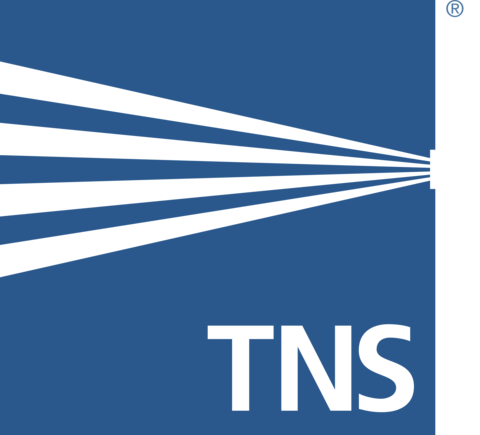TNS 2022 Robocall Report: Robocalls Were Up in 2021, But Top US Carriers Aren’t to Blame
TNS 2022 Robocall Report: Robocalls Were Up in 2021, But Top US Carriers Aren’t to Blame
TNS’ bi-annual Robocall Investigation Report finds robocallers turned attention to VoIP providers in response to top carriers’ progress with STIR/SHAKEN deployment
RESTON, Va.--(BUSINESS WIRE)--Americans were bombarded with 78.9 billion robocalls in 2021, up slightly from 2020 but still well below the 106.9 billion robocalls received at the pre-pandemic peak in 2019. The findings come from the Eighth Edition of Transaction Network Services (TNS) Robocall Investigation Report released today.
While robocalls continue to frustrate consumers, a key report finding is that only 5% of all high-risk calls originated from Tier-1 US carriers (AT&T, Verizon, T-Mobile, Comcast, Charter, Lumen and US Cellular) last year. So where are robocalls coming from? VoIP providers: VoIP calls accounted for 61% of total robocall volume in 2021, up significantly from 53% in 2020. Toll-free calls were the second highest at 15%.
“Only a fraction of robocalls now originate on top US wireless networks, a testament to aggressive efforts by carriers, regulators and policymakers to combat unwanted calls,” said Bill Versen, TNS’ President, Communications Market, and Chief Marketing Officer. “But our report makes clear that this is no time for complacency; bad actors continue to rapidly adapt tactics, shifting their focus to VoIP providers and smaller carriers that are not as far along with STIR/SHAKEN implementation, while also increasingly targeting wireline phone numbers and using robotexts.”
This eighth edition of TNS’ Robocall Investigation Report continues the findings published beginning in 2018 and includes several new insights:
- Robocalls were slightly up in 2021. Robocalls rose 2% last year compared to 2020 but were down 26% from 2019. Despite the drop, only 38% of consumers in a recent TNS survey felt they received fewer robocalls during the pandemic than before COVID-19.
- Pandemic highlights need for branded calling. Struggles by health agencies to reach Americans with critical COVID-19 information during the pandemic has exposed the lack of consumer trust in voice calling and the need for branded calling. Forty-three percent of consumers still answer calls from unknown numbers for fear of missing an important call, which is why nearly six in 10 (59%) of those surveyed would answer a call if the caller ID displayed the logo of a brand they recognize.
- Tier-1 carriers continue to be a small part of the problem. Seventy-five percent (75%) of inter-carrier traffic originates from Tier-1 carriers; however, more than 95% of high-risk calls originate from non-Tier-1 telephone resources.
- Robocallers crossing over to robotexts. With STIR/SHAKEN improving call authentication across networks, robotexts are a logical way for spammers to work around that new standard. TNS found that in December 2021, 48% of robotext scams were from a robocall spammer.
- VoIP originated calls are the largest portion of robocalls. Over two-thirds (68%) of all high-risk calls and 73% of all nuisance calls originated from VoIP numbers in 2021 – representing the largest two sources of these unwanted calls. The FCC’s extension of the STIR/SHAKEN deadline for small service providers with less than 100,000 subscribers to June 30, 2022, likely contributed to the increase of VoIP robocalls.
- Wireline phone numbers overlooked as robocaller target. While much of the attention is focused on robocalls to mobile phones, almost half (48%) of inter-carrier calls placed to wireline numbers in 2021 were unwanted, more than double the 21% of inter-carrier calls placed to wireless numbers. The 48% number is up seven percentage points from the first half of 2021.
The TNS Robocall Investigation Report is a bi-annual update of key robocall trends and insights drawn from more than 1.3 billion daily call events across hundreds of carriers, which events are analyzed through the TNS Call Guardian analytics engine. The current report analyzes full-year 2021 data trends for two types of negative robocalls: high-risk robocalls (scam/fraudulent calls which attempt to acquire call recipient personal information and/or money) and nuisance robocalls (which are not of malicious intent or negligent non-compliance).
Click here for a full copy of the 2022 TNS Robocall Investigation Report, Eighth Edition.
About Transaction Network Services
From small rural operators in the US to the largest multi-national carriers, TNS addresses the full needs of wireless and wireline operators in the US and globally. TNS Call Guardian is an industry-leading call analytics solution used by leading US wireless service providers as well as US landline providers to deliver a superior user experience by protecting their subscribers from high risk and nuisance robocalls. By analyzing over 1 billion call events across more than 500 operators every single day and capturing crowdsourced feedback, the Call Guardian app enables carriers to identify more unwanted robocalls than competitors. Call Guardian is a registered trademark of Transaction Network Services, Inc. For additional information visit here.
Contacts
Company:
TNS
Clare Cockroft
703-814-8065
pr@tnsi.com
Or
Media:
Bluetext for TNS
Thomas Walter
646-265-3144
tns@bluetext.com
